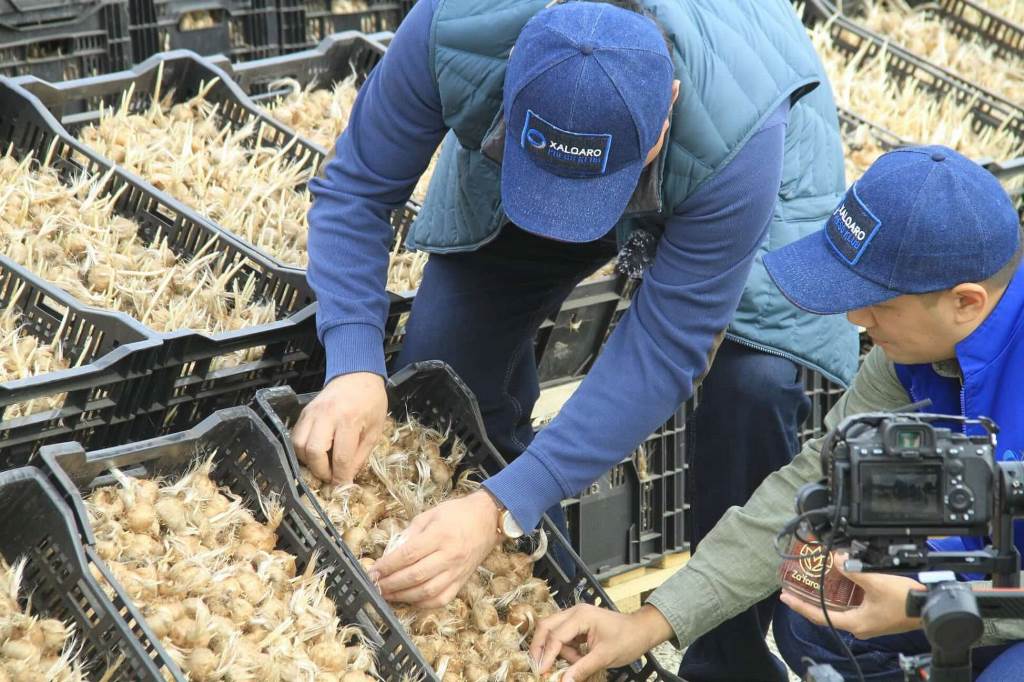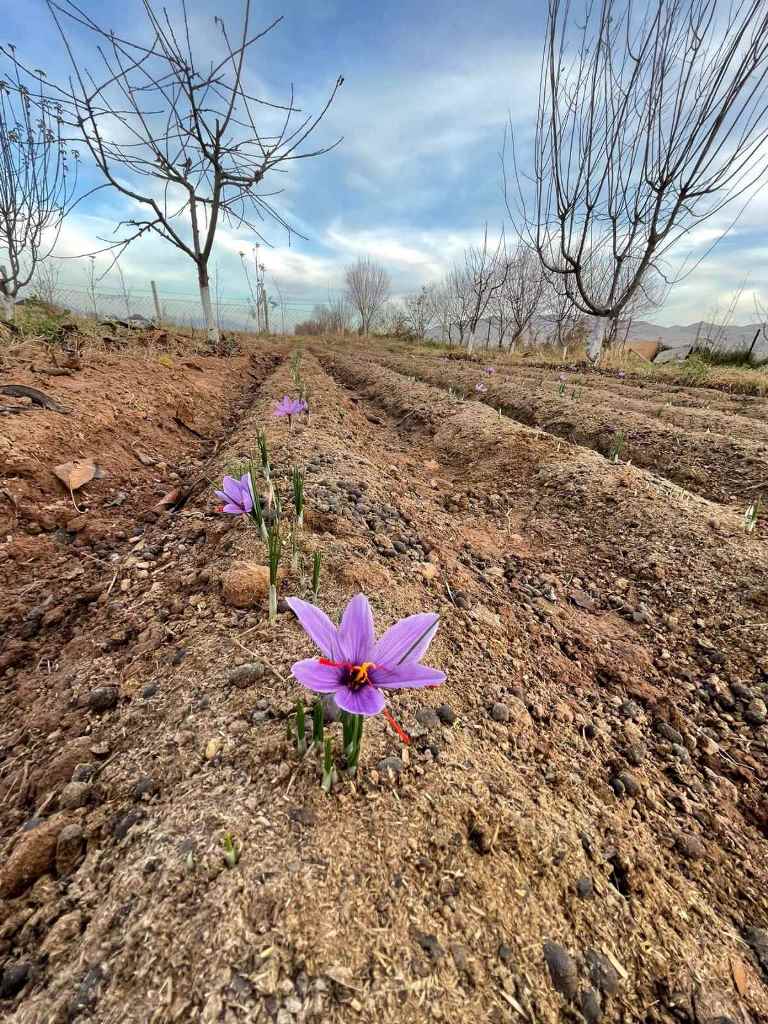Entrepreneurs from Tajikistan jointly with their Uzbek partners have created saffron plantations and they have already got the first harvest from saffron plantations in Tajikistan.
Founder and director-general of AVAS Engineering Company Azim Hakimov has noted recently that saffron bulbs were planted in Tajikistan on a trial basis. According to him, the experiment was successful, the saffron bulbs took root well.

“An agreement with Uzbek partners on establishing a joint saffron growing enterprise – BMB AVAS ZA’FARON -- was concluded in July 2021,” Hakimov told Asia-Plus in an interview.
An estimated budget of the project is reportedly more than 3 million U.S. dollars.
The main saffron plantation of 50 hectares s located in Uzbekistan’s Jizzakh region, while in Tajikistan, two experimental saffron plantations have been created in Panjakent (Sughd province) and Roudaki district (central Tajikistan).

“The bulbs were purchased in Italy,” said Hakimov. “We planted them in October and got the first harvest in early December. Each of flowers has 4-5 stigmas, two-three of them are red and two are yellow. The red ones are the most expensive.”

Recall, the Uzbek-Italian joint venture BMB-Opera Zafferano was launched on May 1, 2020 and it operates as a medicinal plants cluster. According to Dunyo news agency, five million saffron (crocus) bulbs were reportedly shipped from the Italian city of Brescia to Uzbekistan.
The premium bulbs of this unique plant sent from Italy to Uzbekistan have reportedly been created by Italian breeders for centuries. These bulbs were planted on the hills of the Bakhmal district in the Jizzakh region to grow saffron.
Saffron is a spice derived from the flower of Crocus sativus, commonly known as the "saffron crocus". The vivid crimson stigma and styles, called threads, are collected and dried for use mainly as a seasoning and coloring agent in food. Saffron has long been the world's costliest spice by weight. At US$5,000 per kg or higher, saffron is the world's most expensive spice.
Although some doubts remain on its origin, it is believed that saffron originated in Iran. However, Greece and Mesopotamia have also been suggested as the possible region of origin of this plant. Saffron crocus slowly propagated throughout much of Eurasia and was later brought to parts of North Africa, North America, and Oceania.
The domesticated saffron crocus is an autumn-flowering perennial plant unknown in the wild. It probably descends from the eastern Mediterranean autumn-flowering Crocus cartwrightianus, which is also known as "wild saffron" and originated in Crete or Central Asia. C. thomasii and C. pallasii are other possible sources. As a genetically monomorphic clone, it slowly propagated throughout much of Eurasia.
The high retail value of saffron is maintained on world markets because of labor-intensive harvesting methods, which require some 440,000 hand-picked saffron stigmas per kilogram (200,000 stigmas/lb) – equivalently, 150,000 crocus flowers per kilogram (70,000 flowers/lb). Forty hours of labor are needed to pick 150,000 flowers.
One freshly picked crocus flower yields on average 30 mg of fresh saffron or 7 mg dried; roughly 150 flowers yield 1 g of dry saffron threads; to produce 12 g of dried saffron, 450 g of flowers are needed; the yield of dried spice from fresh saffron is only 13 g/kg.







